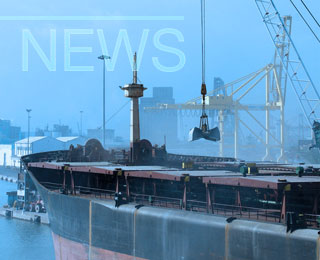Although low rates were persisting in the capesize market, higher rates for smaller vessels and an improving Atlantic basin environment pushed up the Baltic Exchange’s main sea freight index by six points or 0.67% to 908 on Friday, 23 March and further to 922 points by Wednesday, 28 March. "The BDI has been slowly climbing higher over the past two months, but even 2000 points seems like a mountainous journey given that it took 35 trading days to go from 650 points to 900," Arctic Securities analyst Erik Nikolai Stavseth said.
While the capesize index fell 1.08% to 1369 points on Friday, it appears to be turning the corner, climbing by a modest 0.52% to 1316 by Wednesday, aided by expectations of a recovering Chinese demand. However, in the near term, George Lazaridis of Intermodal Shipbrokers Co forecasts a slow capesize recovery as demand from major iron ore exporter Australia remains muted. "The Pacific has been taking the hardest hits this week with limited fresh inquiries coming out of Australia," Lazaridis said.
Nevertheless, Lazaridis was more upbeat on smaller vessel sizes, bringing good news for shipping firms but less positive news for their customers, including cement companies. "Panamaxes are still able to mark further gains as tonnage lists are still holding tight while there is a steady inflow of fresh inquiries," he told Reuters. "The rejuvenated Atlantic basin has been the main cause for this market revival these past weeks and it looks as though it could hold for a while longer," Lazaridis added. This view was supported by the Baltic Panamax index, which rose 0.97% to 1036 points on Friday, 23, reflecting average daily earnings rising to US$8288. By Wednesday, transatlantic RV rates increased from US$6800 to US$7300/day despite a generally slow week in the segment. Baltic rounds fixed at around US$8000, according to shipbrokers Fearnleys. Meanwhile, in the Pacific basin, vessels delivering in northern China could expect to receive US$8000/day while Australian/China routes fixed at US$7000 and India/China trips around US$13,000.
Furthermore, Fearnleys reported that handysize RV rates increased from US$9650 to US$10,750 WoW in the Atlantic basin while their Pacific counterparts slipped slightly from US$11,725 to US$11,650 as the latter market remained quiet.
Strong fleet growth to continue in 2012
Meanwhile, strong fleet growth is expected to continue this year, putting freight rates under continued pressure. For the supramax/handymax fleet, net fleet growth is forecast to be around 14%, down slightly from last year’s 16%, according to Clarksons.
In the handymax size, Clarksons expects around 17.2Mt dwt or 13.6% (net) to be added to the fleet while for the handysize, the figure is about 4.5Mt dwt or 5.3% (net). Demolitions are forecast to peak, especially in the ageing handysize segment, which expects to scrap 180 vessels and views 176 as part of the recycle pool (ie ships facing the sixth or later special survey).
In the medium term, the company envisages net growth to come down further, noting a figure of 8% for 2013.
Clarksons data were sourced from “Dry bulk freight market fundamentals,” presented by Joel Grau, Clarksons at Cemtech Dubai 2012. An analysis of the latest freight trends will be presented at Cemtech Jakarta. For more information, visit www.Cemtech.com/Asia2012
Published under Cement News

